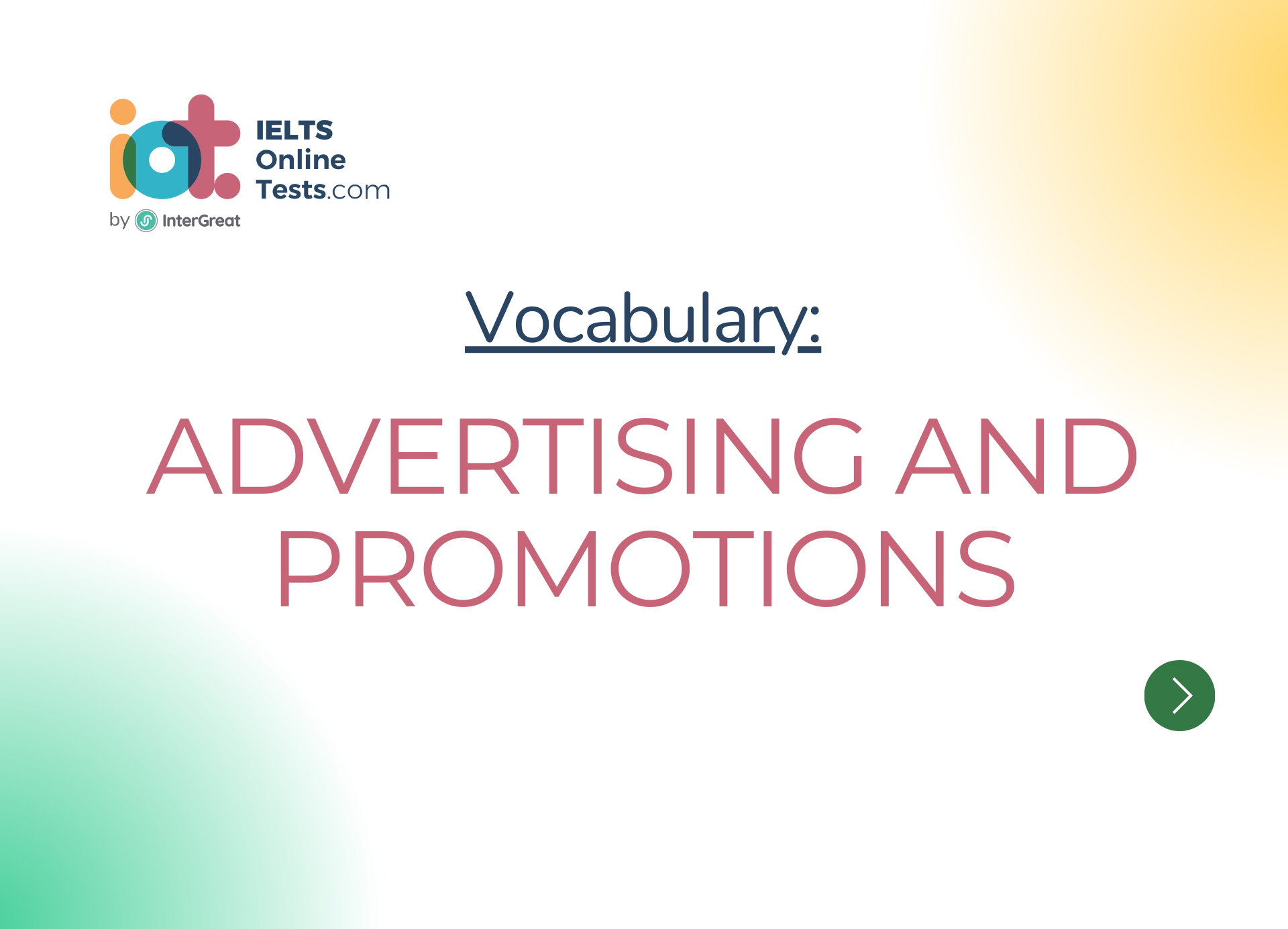
Advertising and promotions
Here's a lesson on vocabulary related to "Advertising and Promotions" for the IELTS band score 3.0-4.5:
I. General Advertising Terms:
Advertisement (ad): A paid message intended to promote a product, service, or event.
Marketing: The activities involved in promoting and selling products or services.
Target audience: The specific group of people that an advertisement is designed to reach and influence.
Branding: The process of creating and establishing a recognizable identity for a product or company.
Campaign: A coordinated series of advertisements or marketing activities with a specific goal.
II. Advertising Channels:
Television (TV) commercials: Advertisements shown on television.
Print advertisements: Advertisements in newspapers, magazines, brochures, or flyers.
Online advertising: Advertisements displayed on websites, social media platforms, or search engines.
Radio commercials: Advertisements aired on radio stations.
Outdoor advertising: Advertisements on billboards, bus stops, or public spaces.
III. Types of Advertisements:
Product placement: The inclusion of branded products or references in movies, TV shows, or other media.
Banner ad: A rectangular advertisement placed on a website or online platform.
Celebrity endorsement: The use of a famous person to promote a product or service.
Infomercial: A longer television advertisement that provides detailed information about a product or service.
Viral marketing: Marketing strategies that aim to create online content that spreads rapidly and organically.
IV. Promotional Techniques:
Discount/sale: Temporary price reductions to encourage purchases.
Free samples: Small portions of a product given away for people to try.
Coupons: Vouchers or codes that provide discounts or special offers.
Loyalty programs: Programs that reward repeat customers with benefits or discounts.
Sweepstakes/contests: Promotions that offer participants a chance to win prizes by entering a competition.
V. Advertising Vocabulary:
Slogan: A memorable phrase or tagline used to promote a product or brand.
Call to action: A statement or instruction that urges the viewer or reader to take a specific action.
Brand awareness: The extent to which consumers recognize and recall a brand.
Market research: The collection and analysis of data about consumer preferences and behaviors.
Impression: The number of times an advertisement is viewed by a potential audience.
VI. Advertising Appeals:
Emotional appeal: Advertising that aims to evoke strong emotions or feelings in consumers.
Rational appeal: Advertising that focuses on logical reasoning, facts, or practical benefits of a product.
Humor: The use of comedy or funny elements to engage and entertain the audience.
Fear appeal: Advertising that highlights potential negative consequences to persuade consumers.
Celebrity endorsement: The use of well-known individuals to promote a product or service.
VII. Marketing Strategies:
Brand positioning: The way a brand is perceived and differentiated from competitors in the market.
Targeting: Identifying and selecting specific segments of the market to focus advertising efforts on.
Market segmentation: Dividing a market into distinct groups based on demographic, geographic, or psychographic factors.
Product differentiation: Highlighting unique features or qualities that set a product apart from others in the market.
Competitive analysis: Evaluating competitors' strategies and offerings to gain a competitive advantage.
Remember to practice using these vocabulary words in sentences and conversations to improve your understanding and fluency in English.




